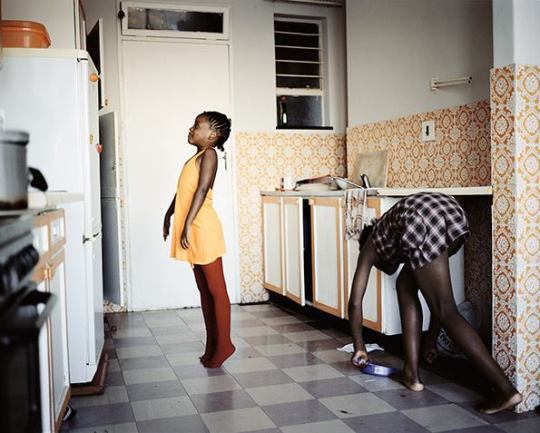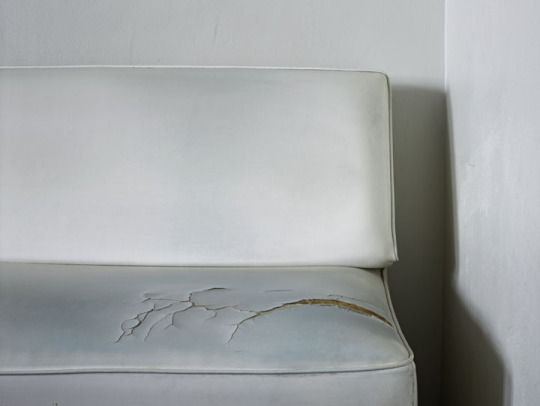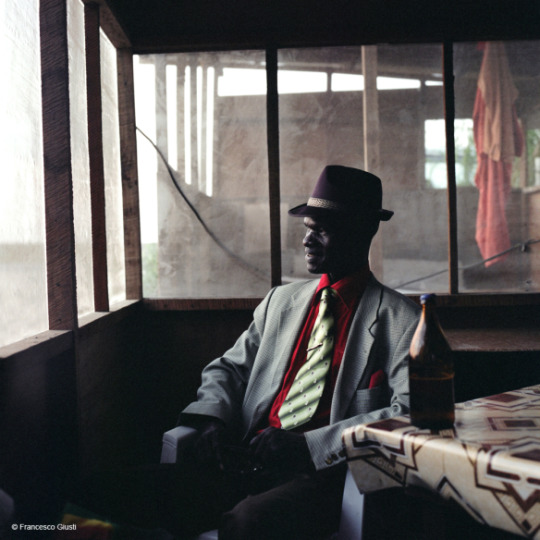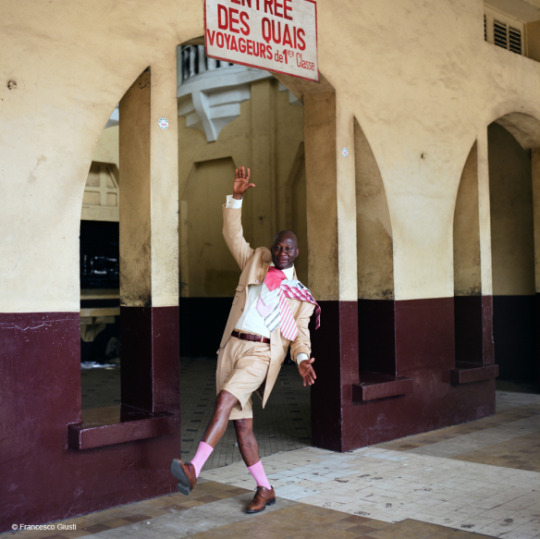Link
"Recent Histories" unites the perspectives of fourteen artists of African decent, who investigate social identity, questions of belonging, and an array of sociopolitical concerns. Providing a point of entry to engage critically with current practices and the frameworks of contemporary African photography and video art, "Recent Histories" features an introduction by the curators, seven essays by renowned critics and scholars, as well as statements from and conversations with each individual artist.
(Published by The Walther Collection/Steidl)
#book recommendation#catalogue#exhibition#recent histories#african photography#photographic exhibition#neu-ulm#germany#new york#project space#the walther collection#collection#museum#contemporary#video art#simon gush#mimi cherono ng'ok#edson chagas#em'kal eyongakpa#michael tsegaye#thabiso sekgala#sabelo mlangeni#délio jasse#mame-diarra niang#lebohang kganye#andrew esiebo#dawit l. petros#francois-xavier gbré#zina saro-wiwa
7 notes
·
View notes
Link
3 notes
·
View notes
Photo

Don’t miss the upcoming exhibition Recent Histories: Contemporary African Photography and Video Art by The Walther Collection in Neu-Ulm, Germany. The show runs from May 7 - November 19, 2017.
#photography exhibition#the walther collection#recent histories#contemporary art#francois-xavier gbré#em'kal eyongakpa#sabelo mlangeni#thabiso sekgala#mimi cherono ng'ok#mama-diarra niang#simon gush#délio jasse#dawit l. petros#zina saro-wiwa#lebohang kganye#edson chagas#michael tsegaye#andrew esiebo
24 notes
·
View notes
Photo

FIDAK exhibition centre, Dakar, Senegal. Designed by French architects Jean Francois Lamoureux and Jean-Louis Marin.
#Dakar#Senegal#West Africa#triangles#architecture#architecture of independence#architektur der unabhängigkeit#Jean Francois Lamoureux#Jean-Louis Marin#modernist architecture#african#modernism#photography#Iwan Baan
15 notes
·
View notes
Photo

La Pyramide, Abidjan, Ivory Coast. Designed by Italian architect Rinaldo Olivieri.
#la pyramide#architecture#abidjan#ivory coast#elfenbeinküste#cote d'ivoire#built in#1968-1973#modernist architecture#plateau area#african modernism#architecture of independence#iwan baan#photography#rinaldo olivieri#architetto#Architektur der Unabhängigkeit#modernism
41 notes
·
View notes
Photo

Ibrahim El-Salahi
Reborn Sounds of Childhood Dreams I 1961–5
Tate
111 notes
·
View notes
Photo

Book : African modernism
“The Architecture of Independence. Ghana, Senegal, Côte d'Ivoire, Kenya, Zambia - Never before has modern architecture in Africa been studied and presented so comprehensively and thoroughly: a groundbreaking study, lavishly illustrated.”
Edited by Manuel Herz with Ingrid Schröder, Hans Focketyn, Julia Jamrozik. Photographs by Iwan Baan and Alexia Webster.
More informations
#African Modernism#architecture#architecture of independecne#manuel herz#iwan baan#alexia webster#photography#ghana#senegal#côte d'ivoire#elfenbeinküste#kenya#zambia#kenia#book
50 notes
·
View notes
Photo

Thabiso Sekgala (1981-2014), Church, Jabal Webdin, Running Amman series, 2013. Courtesy of Goodman Gallery.
I guess, Thabiso Sekgala will always be one of my favourite photographers.
8 notes
·
View notes
Photo

Mikhael Subotzky and Patrick Waterhouse, from South Africa and the UK respectively, were awarded the 2015 Deutsche Börse Photography Prize for their publication Ponte City on Thursday..
➢ itsnicethat.com/articles/subotzky-waterhouse
➢ thephotographersgallery.org.uk/deutsche-b-rse-prize-2015
#yes!#mikhael subotzky#patrick waterhouse#south africa#photography#deutsche börse photography prize#2015#ponte city#johannesburg#jo'burg
247 notes
·
View notes
Text
A giant paper boat? Art’s response to migrant drownings should be way more aggressive
Read The Guardian‘s article on Vik Muniz’s floating installation Lampedusa - a 45 feet paper boat that will precariously sail the canals, alongside yachts, gondolas, and vaporettos.
4 notes
·
View notes
Text
El Anatsui Wins Venice Biennale Golden Lion for Lifetime Achievement

El Anatsui (b. 1944), Fresh and Fading Memories, 2007.
38 notes
·
View notes
Photo

Thabiso Sekgala (1981-2014). A Home, Afrikanische Strasse, Berlin, 2014. Courtesy of The Goodman Gallery, Johannesburg and Cape Town.
#Thabiso Sekgala#photographer#film photography#documentary#South African#most talented#natural light#Berlin#Afrikanisches Viertel#medium format#6x6#square#photography
14 notes
·
View notes
Photo

Thabiso Sekgala (1981-2014). Gokitima Gophala ke kgosepela, Bulawayo, 2013. Courtesy of The Goodman Gallery, Johannesburg and Cape Town.
#Thabiso Sekgala#photography#photographer#South African#medium format#analogue#film photography#rollfilm#most talented#documentary#mannequin#mangled mannequin
65 notes
·
View notes
Photo

Pieter Hugo (*1976), Inside Arcadia Place old-age home, Observatory, from the series Kin, 2013.
1K notes
·
View notes
Link
Today's post deals with literature for a change. I just came across this nice podcast featuring Abdilatif Abdalla who happend to be my Swahili teacher during my studies a few years back.
Abdilatif Abdalla is the best-known Swahili poet and independent Kenya’s first political prisoner. He discusses poetry as a political instrument and as an academic field; publication prospects for African poets; and how poetry enabled him to survive three years of solitary confinement, after which he spent 22 years in exile. The interview ends with Abdalla reciting his poem “Siwati” (“I Will Never Abandon My Convictions”).
#Abdilatif Abdalla#poet#writer#Kiswahili#Swahili#Kenyan#poetry#Tanzania#Mombasa#Kenya#literature#podcast#Afripod
47 notes
·
View notes
Photo
La société des ambianceurs et des personnes élégantes.






A portrait story of the members of the SAPE from Pointe-Noire, Republic of the Congo.
by Francesco Giusti.
A sub culture in the Congo of men who dress in brightly coloured tailored suits and expensive shoes and who demonstrate impeccable manners and gentlemanly conduct.
The members of the SAPE take a touch of glamour into their humble environment with their refined style and faultless clothes.
Everyone has his own repertory of gestures, marking him from all the others. Elegance is not the only important character. First of all, in fact, a true member of the SAPE is a gentleman and a pacifist. Every week-end the members of the SAPE, with their eccentric and amusing nicknames, gather in bars and fashionable dancing halls and parade in the streets among amused children and applauses of the passers-by. These extemporized and spontaneous parades are the expression of a urban culture looking for new reference parameters and codes such as no-violence and elegance. They reflect the wish of young people in particular not to be left apart by society. source
#La société des ambianceurs et des personnes élégantes#SAPE#Afrique#Africa#fashion#Sapeur#Brazzaville#Congo#subculture#La Sape#Central Africa#Republique du Congo#Zentralafrika#Dandy#elegance
154 notes
·
View notes